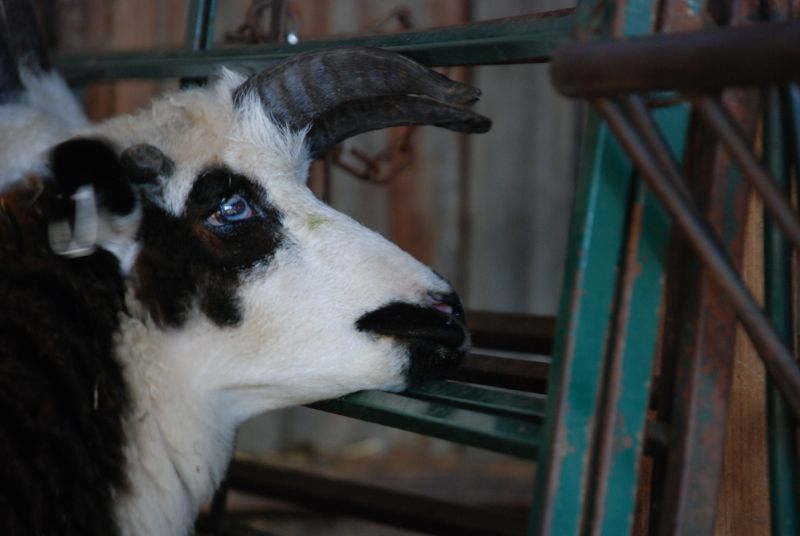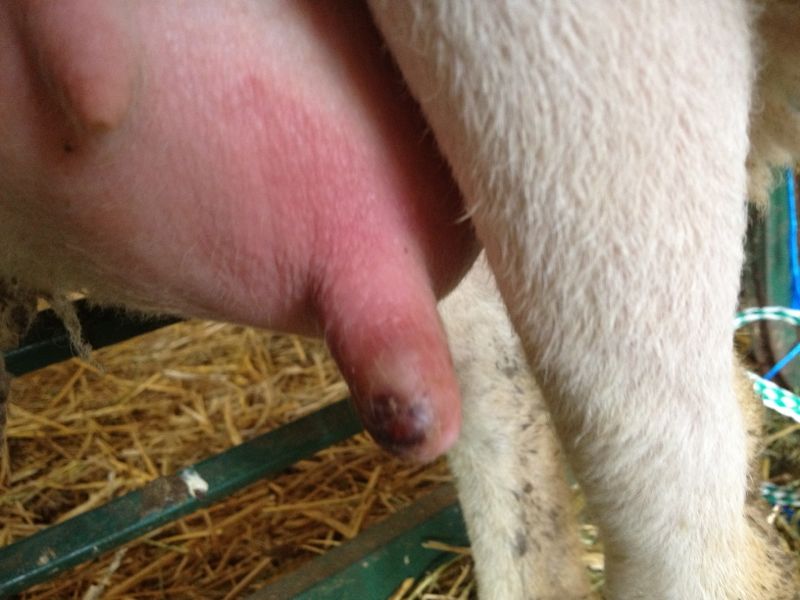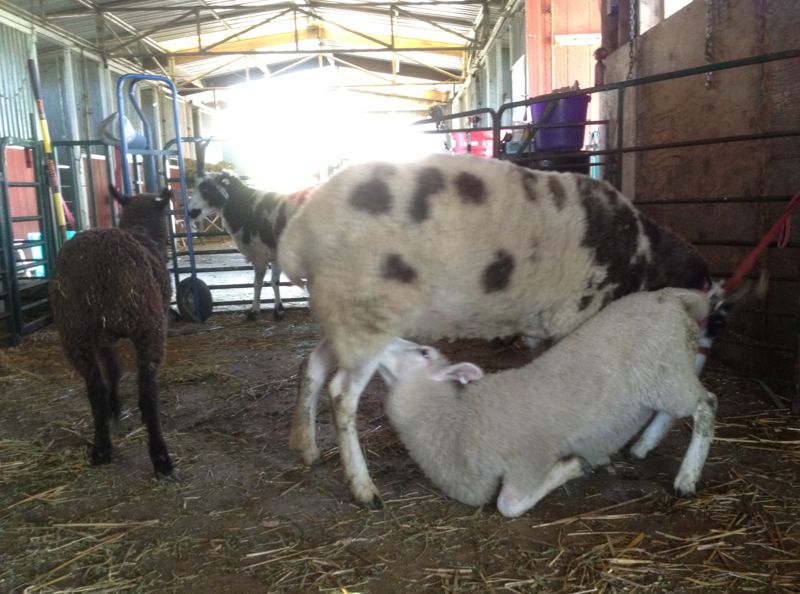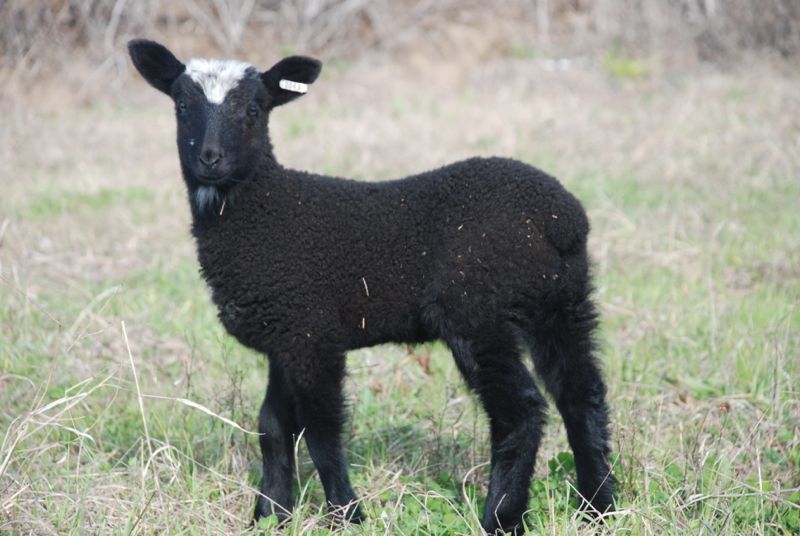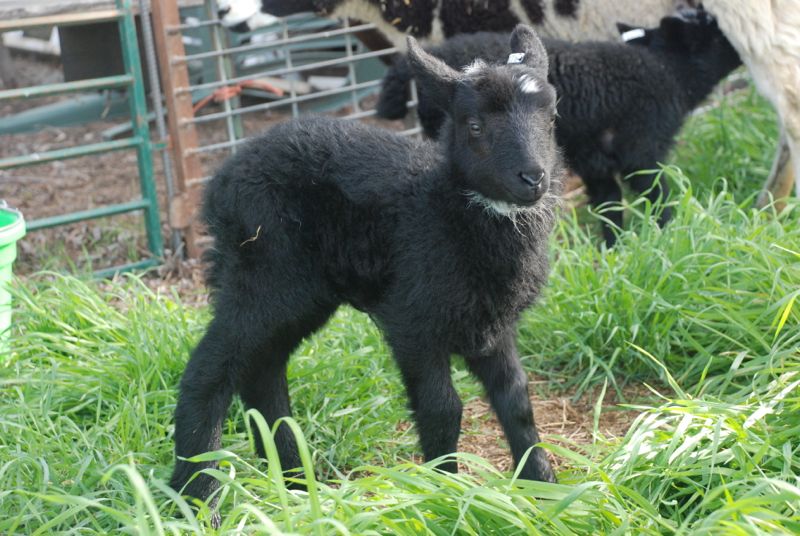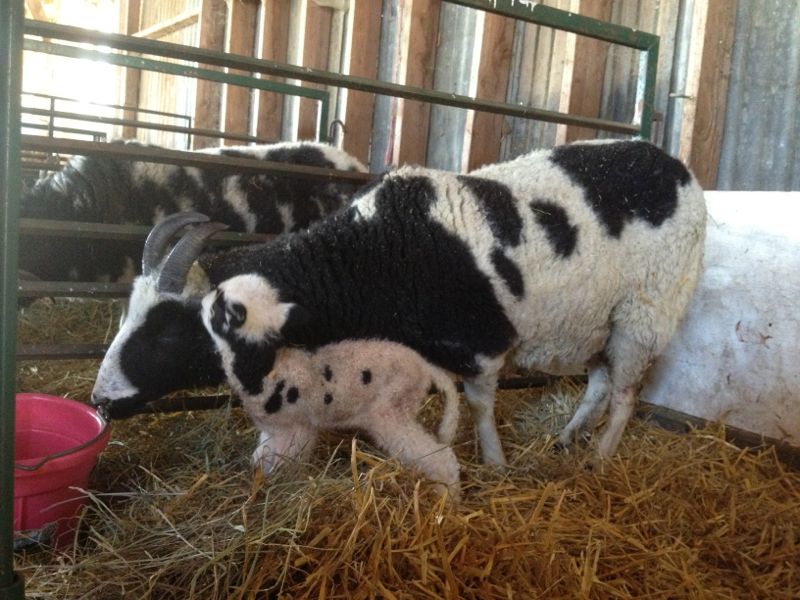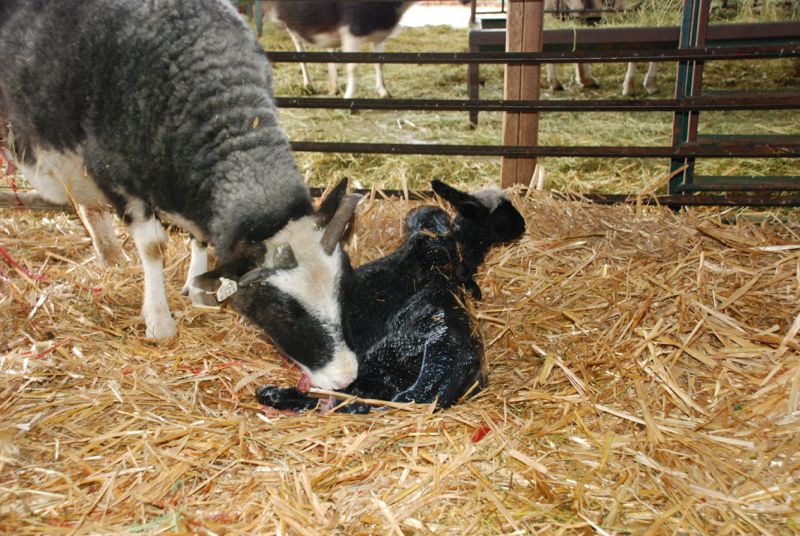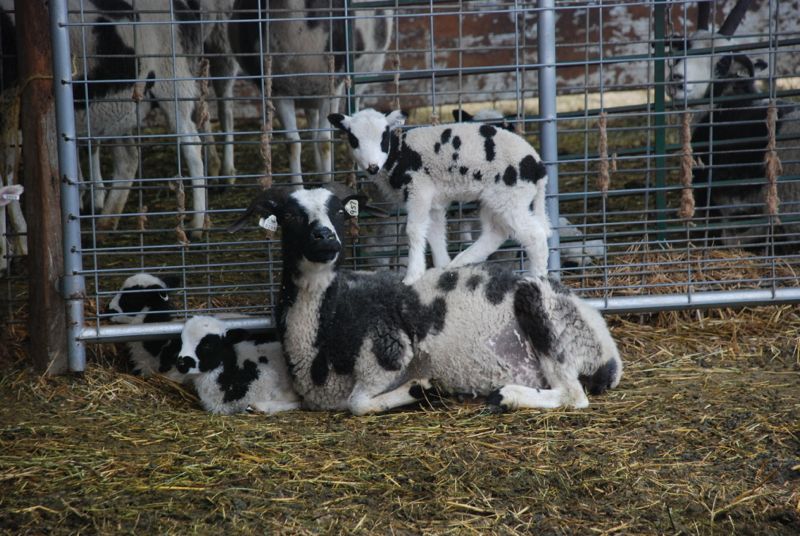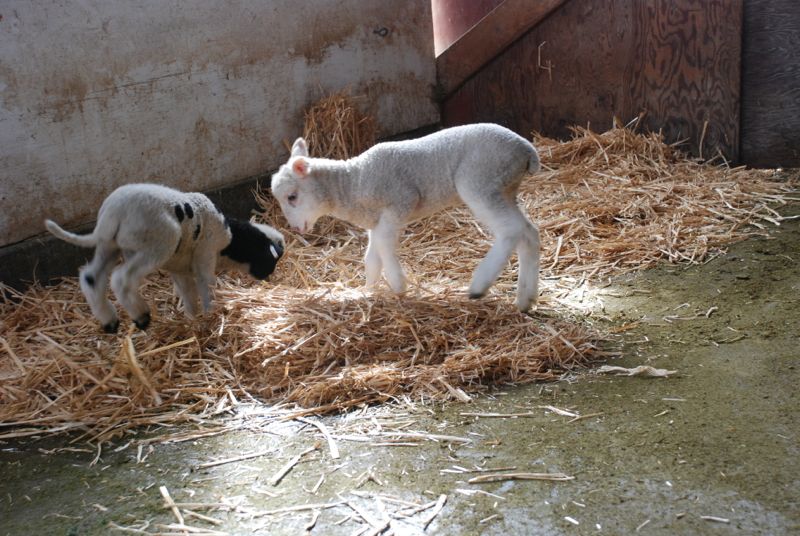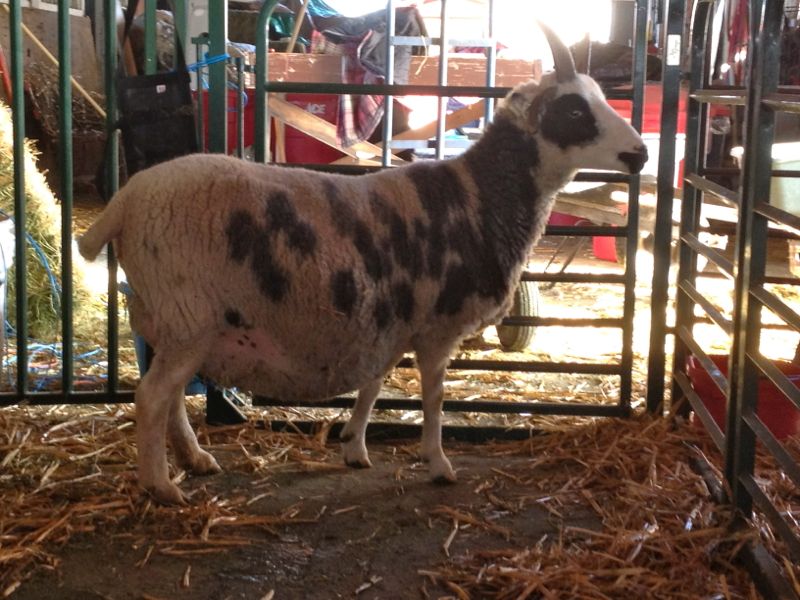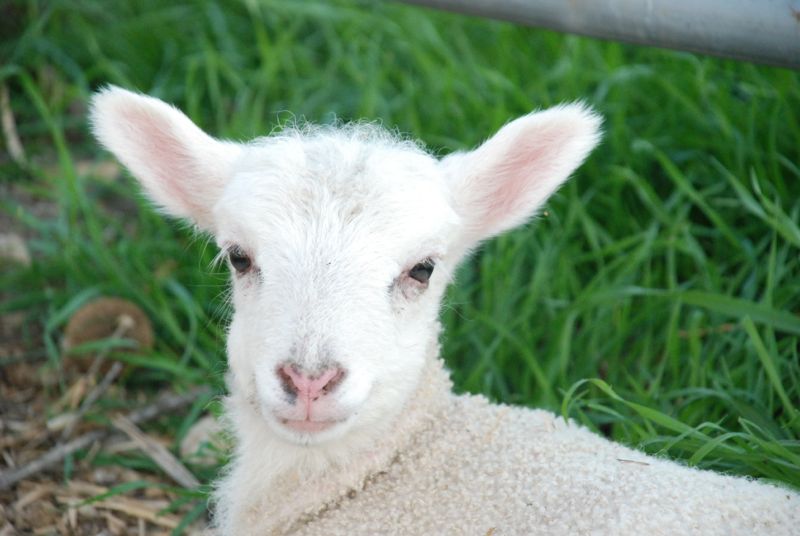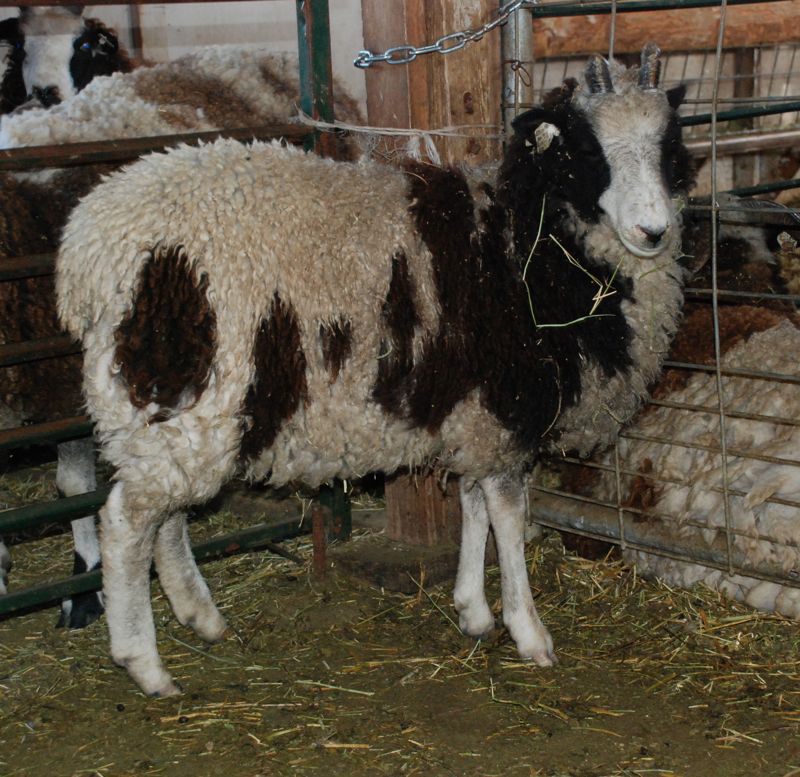You Can't Always Count on Genetics
/This is Ebony, a black and white Jacob ewe.

This is Hudson, a lilac Jacob ram.
Here is one of their lambs at almost 2 months old. He is lilac like Dad.
This is the other lamb at about a month old...
... and here he is at just over 2 months. He has been marked with a cull tag because of a severe split eyelid, but also, do you see how his horns are growing?
Both lambs today, at 3 1/2 months old:
I love the horns, the color, and the fleece on this lilac ram, but (as in the discussion over on Facebook) I sure wish that I could combine these lambs into one and keep just the parts I like. Look at those pretty blue eyes on the black and white ram...
...and he has nicely marked feet also.
Speaking of rams, here are a few more photos:
The photo above is of Meridian Clapton at about 6 months...
and here he is as a yearling. Look at the photo below for horn detail on his right side.
The first thing that is unusual is how his horns go behind his neck instead of under, but there is also a fifth horn there.
Meet Puddleduck Sullivan, a 2-horn yearling ram. But is he really a 2-horned ram? I see a seam in those horns that could mean that he is a fused 4-horn. And he also has another horn on this side. People talk about 6-horn Jacob sheep, but I haven't seen any in which the 5th and 6th horns weren't scurs or some how compromised by the larger horns. After all, where would you put another full set of horns?
This is Meridian Fogerty, a another 2-horn yearling ram. I had so many rams last year that I didn't use him, but he will be in this fall's ram line-up. His horns are closer to his face than I'd like, but still OK.
One more ram. Sweetgrass Clint is Clapton's sire and here he is (above) at 6 months old.
This is Clint last fall as an adult.
Bottom line--you don't necessarily get the perfect lamb by breeding two "perfect" parents and you can't predict how the lamb will look as an adult when you buy it at 4 months old.
For more photos of how rams' horns change see my website photo gallery . By the way, Ebony, who is at the beginning of this post, stars in her own video over on YouTube. Click here and find her video to see her having those ram lambs.






